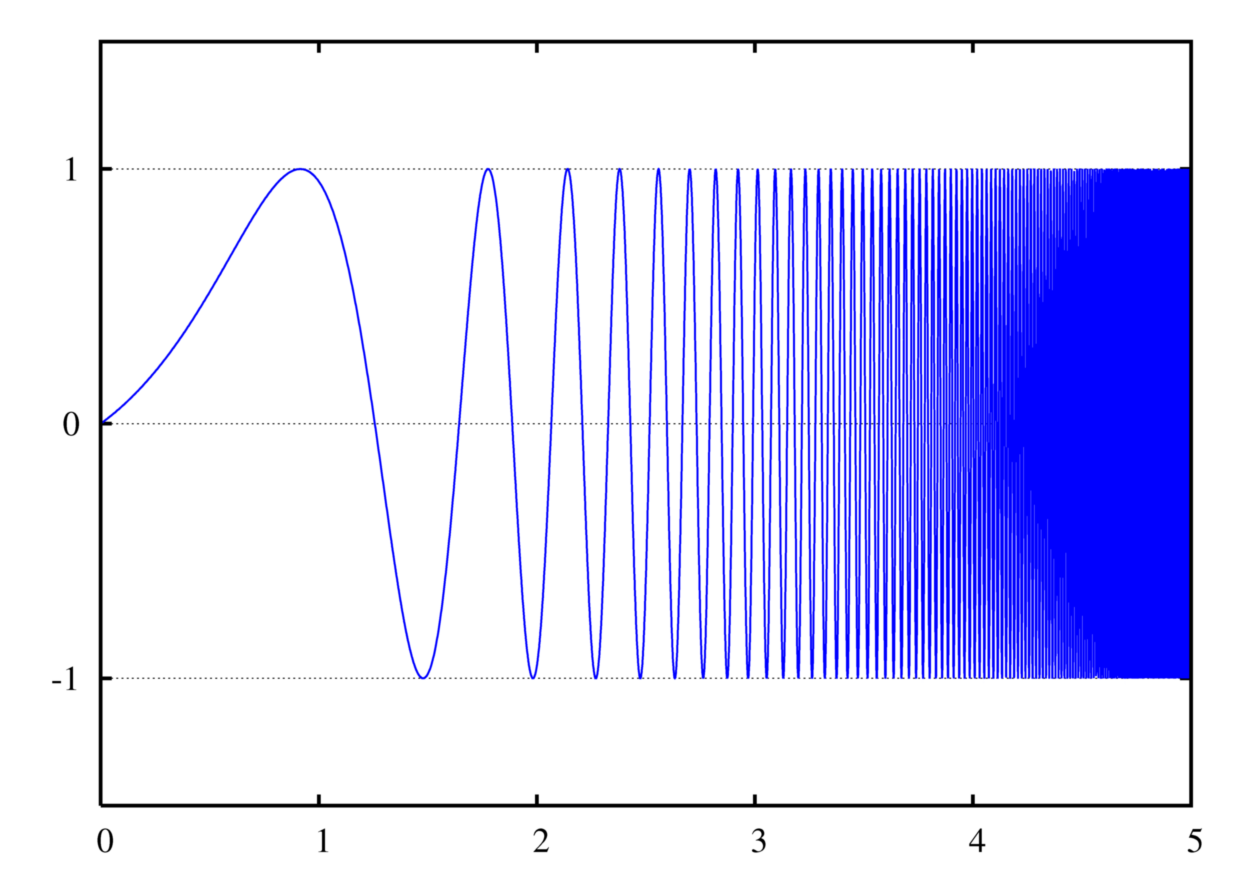Chirp
A chirp is a signal in which the frequency increases ('up-chirp') or decreases ('down-chirp') with time. It is commonly used in sonar and radar, but has other applications, such as in spread spectrum communications. In spread spectrum usage, SAW devices such as RACs are often used to generate and demodulate the chirped signals.
In a linear chirp, the frequency varies linearly with time:
where f0 is the starting frequency (at time t=0), and k is the rate of frequency increase. A corresponding time domain function for a sinusoidal chirp is:
In a geometric or exponential chirp, the frequency of the signal varies with a geometric relationship over time. In other words, if two points in the waveform are chosen, t1 and t2, and the time interval between them t2-t1 is kept constant, the frequency ratio f(t2)/f(t1) will also be constant. The frequency varies exponentially as a function of time:
In this case, f0 is the frequency at t=0, and k is the rate of exponential frequency increase. A corresponding sinusoidal chirp waveform would be defined by:
Although somewhat harder to generate, the geometric type does not suffer from reduction in correlation gain if Doppler shifted by a moving target. This is because the Doppler shift actually scales the frequencies of a wave by a multiplier (shown below as the constant c).
From the equations above, it can be seen that this actually changes the rate of frequency increase of a linear chirp (kt multiplied by a constant) so that the correlation of the original function with the reflected function is low.
Because of the geometric relationship, the Doppler shifted geometric chirp will effectively start at a different frequency (f0 multiplied by a constant), but follow the same pattern of exponential frequency increase, so the end of the original wave, for instance, will still overlap perfectly with the beginning of the reflected wave, and the magnitude of the correlation will be high for that section of the wave.
A chirp signal can be generated with analog circuitry via a VCO, and a linearly or exponentially ramping control voltage. It can also be generated digitally by a DSP and DAC, perhaps by varying the phase angle coefficient in the sinusoid generating function.






